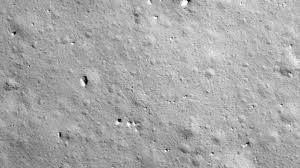
Breaking News
 $26M Frozen on Blockchain - With One Click
$26M Frozen on Blockchain - With One Click
 Italy are on national strike shutdown rejecting digital enslavement...
Italy are on national strike shutdown rejecting digital enslavement...
 The following U.S. states are currently using the rebranded "Reporty Homeland Security" so
The following U.S. states are currently using the rebranded "Reporty Homeland Security" so
 NATO Chief Urges Europe To Prepare For Long-Term World War With Russia, China, Iran & North Korea
NATO Chief Urges Europe To Prepare For Long-Term World War With Russia, China, Iran & North Korea
Top Tech News
 HUGE 32kWh LiFePO4 DIY Battery w/ 628Ah Cells! 90 Minute Build
HUGE 32kWh LiFePO4 DIY Battery w/ 628Ah Cells! 90 Minute Build
 What Has Bitcoin Become 17 Years After Satoshi Nakamoto Published The Whitepaper?
What Has Bitcoin Become 17 Years After Satoshi Nakamoto Published The Whitepaper?
 Japan just injected artificial blood into a human. No blood type needed. No refrigeration.
Japan just injected artificial blood into a human. No blood type needed. No refrigeration.
 The 6 Best LLM Tools To Run Models Locally
The 6 Best LLM Tools To Run Models Locally
 Testing My First Sodium-Ion Solar Battery
Testing My First Sodium-Ion Solar Battery
 A man once paralyzed from the waist down now stands on his own, not with machines or wires,...
A man once paralyzed from the waist down now stands on his own, not with machines or wires,...
 Review: Thumb-sized thermal camera turns your phone into a smart tool
Review: Thumb-sized thermal camera turns your phone into a smart tool
 Army To Bring Nuclear Microreactors To Its Bases By 2028
Army To Bring Nuclear Microreactors To Its Bases By 2028
 Nissan Says It's On Track For Solid-State Batteries That Double EV Range By 2028
Nissan Says It's On Track For Solid-State Batteries That Double EV Range By 2028
Chinese Probe Departs Moon, Set To Return To Earth With Haul Of Lunar Rocks

The probe was tasked with collecting a sample of lunar rocks, a task not undertaken by China in its last two trips to the moon, which occurred in 2019 and 2013.
We reported two days ago that the spacecraft had landed on the moon. China's National Space Administration declared on Tuesday morning that it's "Chang'e-5 successfully landed on the near side of moon."
The probe's mission included using a robotic arm, from the lander, to drill into the lunar surface to collect about four pounds of moon rocks, storing them in a container on the ascent module on top of the lander, before returning to Earth.
The goal of the mission was to collect 4.5 pounds of samples in a previously untouched area called Oceanus Procellarum, or "Ocean of Storms". BBC News' Jonathan Amos tweeted a CCTV clip of Chang'e 5 approaching the lunar surface earlier this week:

 Carbon based computers that run on iron
Carbon based computers that run on iron

